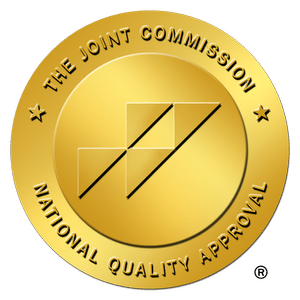
When faced with challenges or stressful events, it is normal for our brains to become overwhelmed. Most of us have had to respond to an unexpected experience that may trigger a period of intense stress.
While many of us tend to overcome these quite quickly, some people may not have the resilience necessary to overcome this stress.
Depending on the nature of the stressor and presentation of symptoms, it could lead to one of two serious mental health disorders: Adjustment Disorder (AD) or Post Traumatic Stress Disorder (PTSD).
Understanding Adjustment Disorder
An Adjustment Disorder (AD) is a condition brought on by a strong emotional or behavioral reaction to sudden change or stressful life experiences. Some of these experiences may include:
- Losing a job or getting laid off
- Sudden illness
- Relationship breakup
- Financial challenges
- An unwanted move
- Not having your physical or emotional needs met
- Witnessing or participating in war
- Experiencing some other violent calamity such as an environmental disaster
People diagnosed with Adjustment Disorder lack the necessary coping skills for “bouncing back” from these sudden experiences of stress.
This can cause short-term symptoms that usually appear within 3 months of the event and may last up to six months afterwards. Examples of these symptoms include:
- Sadness and crying easily
- Feeling depressed or hopeless
- Trouble sleeping
- Anxiety
- Irritability
- Decreased appetite
- Gastrointestinal problems
- Headaches
- Avoidance of social situations
- Social isolation
- Relationship challenges
- Difficulties at work
- Trouble focusing
- Impulsiveness
- Suicidal thoughts
One study found that adjustment disorders affect an estimated 2% of people worldwide.
People at risk for developing AD are more sensitive to environmental change or stressors. They may have underlying health problems or a history of bad experiences during periods of adjustment.
Understanding PTSD
You may have seen people use the word PTSD to describe feelings of uncomfortable experiences on social media or pop psychology forums—in reality, PTSD is a serious clinical mental health condition that causes intrusive symptoms after witnessing or experiencing a traumatic experience.
This can be a sudden event like a terrorist attack; or an ongoing period of extreme stress such as growing up in a home with domestic violence.
During a period of trauma, the mind goes into “survival mode” and the body is flooded with cortisol. This can cause debilitating symptoms and make a patient lose their basic sense of safety and trust.
Unlike AD, the experiences that cause PTSD go above and beyond a simple change in environment or “normal” stressor. PTSD is specifically related to a traumatic experience, much more severe than a typical experience of stress.
Some experiences that may cause PTSD symptoms include:
- Military combat
- Sexual assault or abuse
- Physical assault or violence
- Environmental catastrophe
- Witnessing a death or injury
- Car accident
The response to extreme stress found in patients with PTSD is much more severe than in those with AD. PTSD symptoms can vary from person to person, but they typically fall into four categories, must last more than a month and significantly impact daily functioning.
- Intrusive thoughts, flashbacks or nightmares
- Avoiding people, places, or things that remind a person of the traumatic event
- Feelings of guilt, shame, or depression
- Being in a state of hyper arousal which can cause anger, irritability or hypervigilance
PTSD is not just a psychological condition; it also has physiological and biological components. In response to a traumatic event, the body releases stress hormones such as cortisol and adrenaline. These hormones help the body respond to stress in the short term, but over time, can cause damage to the body and brain.
PTSD can severely disrupt a person’s life, causing other symptoms such as:
- Headaches, gastrointestinal issues and problems sleeping
- Severe anxiety
- Depression
- Substance abuse
- Difficulties in maintaining relationships and employment

Adjustment Disorder vs PTSD
Severity of Stressors
It can be challenging to differentiate between AD and PTSD as they may present with some similar symptoms.
Understanding the nature of the stressor, timelines and severity of symptoms is important for a proper diagnosis. AD symptoms are typically related to the stressor itself, and may diminish once the individual adapts to the new circumstances.
PTSD keeps you in a state of arousal as if your body is re-living the event.
AD symptoms usually tend to recede after people adapt to their new circumstances. With PTSD, there is often no “adjusting” without proper intervention from a trauma-trained therapist.
- AD is typically triggered by common stressful life events but not traumatic.
- PTSD is triggered by severe traumatic events that involve a threat to life, health or safety.
- The stressors in AD may be more varied and less severe compared to the intense and often life-threatening stressors that lead to PTSD
The severity of the actual event is often more intense in cases of PTSD. AD is triggered by common stressful events such as going to college, losing a job or breaking up in a relationship.
Types of Symptoms
- AD symptoms are relate more to emotional and behavioral changes in response to stress
- PTSD symptoms are more intense and include specific symptoms like flashbacks and nightmares triggered by traumatic events
- The duration and intensity of symptoms in PTSD are generally more severe and ongoing than in AD
Challenges in Diagnosis of These Disorders
Although AD and PTSD can share similar symptoms, they are distinct conditions. They can be difficult to diagnose solely on symptoms such as:
- Anxiety
- Depression
- Disturbed conduct
- Difficulty concentrating
The trained therapist or physician needs to spend some time understanding the nature of the stressor, timeline and severity of symptoms. Building a strong rapport with the patient will help get a more detailed history and avoid misdiagnosis.
Treatment Available
Both conditions can greatly benefit from treatment in order to ease symptoms and build resilience. Treatment for PTSD may require longer or more frequent sessions, but both benefit from some of the care below:
Cognitive Behavioral Therapy
CBT is a widely practiced psychotherapeutic approach. It focuses on helping individuals recognize triggers and modify negative thought patterns that influence their mood and can cause unwanted symptoms.
Depending on the diagnosis of either PTSD or AD, it is adapted to suit their individual needs and history.
Eye Movement Desensitization and Reprocessing (EMDR)
The EDMR treatment is more specific to patients with PTSD. It uses bilateral stimulation to help activate parts of the brain—making it easier to rewire thoughts and process traumatic memories.
Medication
Although medication won’t remove the root cause of the problem, antidepressants such as SSRIs, are often prescribed for both conditions to manage some of the symptoms like depression or anxiety.
Prazosin may be prescribed to patients with PTSD to reduce nightmares and other trauma-related symptoms.
Group Therapy
Support groups are a great way to manage stress and connect with others who may share similar experiences. Patients with AD may find comfort in joining a group related to relationships, grief, transition periods in life, or any other normal stressors that may be causing them distress.
Many trauma specific groups exist to support survivors recover from a variety of traumatic experiences.




